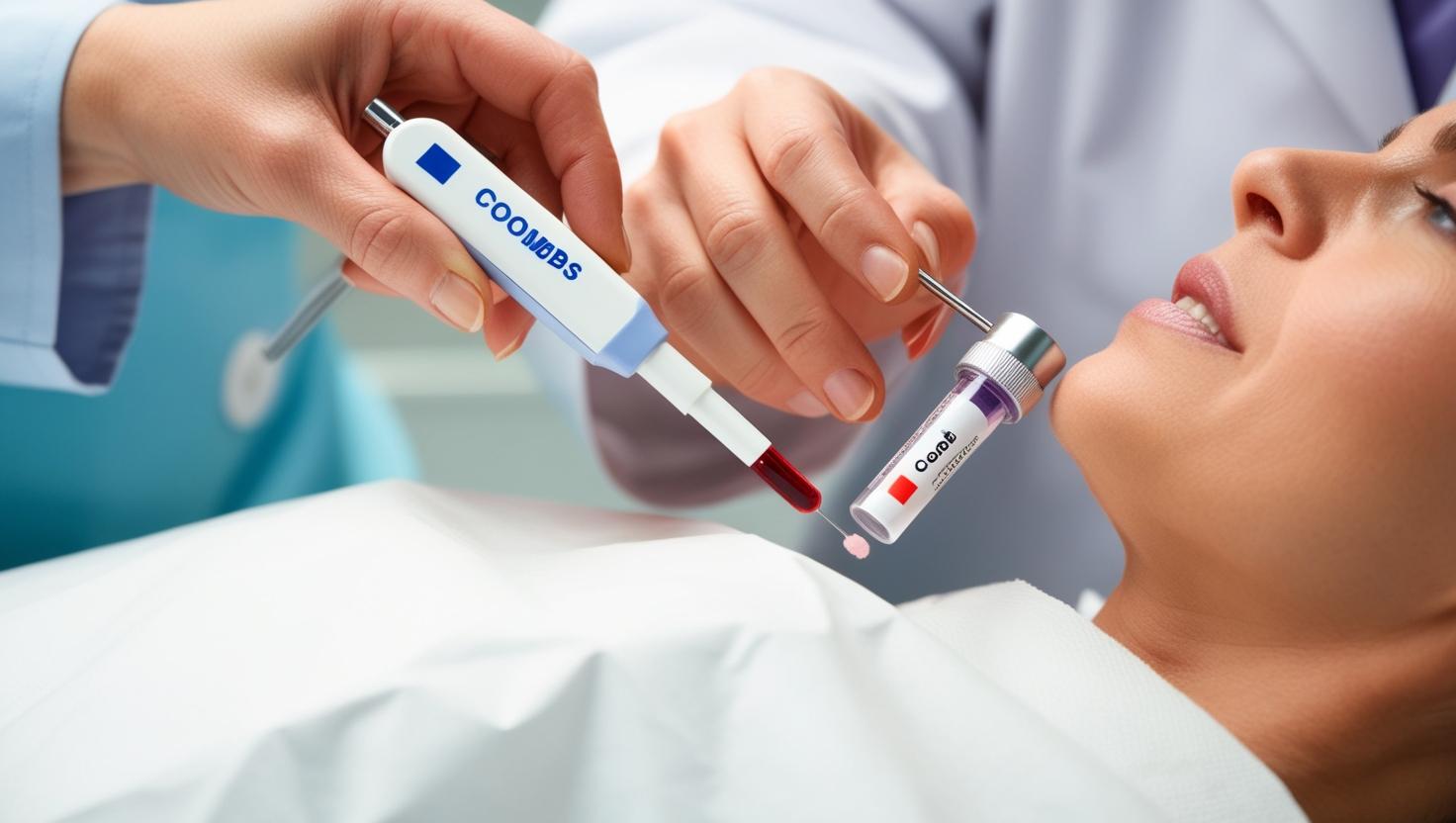Direct Coombs Test (DCT)
The Direct Coombs test (DCT), also known as the Direct Antiglobulin Test (DAT), is a diagnostic tool used to detect antibodies or complement proteins attached to the surface of red blood cells. It is important in diagnosing conditions where the immune system mistakenly attacks and destroys red blood cells, leading to hemolytic anemia.
Indications of the direct Coombs Test (Direct Antiglobulin Test)
The Direct Coombs test is primarily used to diagnose autoimmune hemolytic anemia (AIHA), a condition where the immune system attacks the body’s own red blood cells. In addition,it is used to investigate other conditions such as chronic lymphocytic leukemia, erythroblastosis fetalis (hemolytic disease of the newborn), infectious mononucleosis, mycoplasma infection, syphilis, and systemic lupus erythematosus.
Procedure
- Sample Collection: Collect a blood sample in a tube containing EDTA to prevent clotting.
- Preparation:
- Separate red blood cells from plasma by centrifugation.
- Wash the red blood cells three times with isotonic saline to remove any unbound proteins.
- Testing:
- Prepare a 3–5% suspension of the washed red blood cells in saline.
- Add 1–2 drops of the red cell suspension to a test tube.
- Add 1–2 drops of antihuman globulin reagent (Coombs reagent).
- Mix the contents gently and centrifuge the tube at 2500 rpm for 20 seconds.
- Interpretation:
- Observe the tube for agglutination (clumping of red blood cells).
- Positive Result: Indicates the presence of antibodies or complement on the red blood cells.
- Negative Result: No agglutination, suggesting the absence of antibodies or complement.
Clinical Significance
- Positive Test: Suggests autoimmune hemolytic anemia, hemolytic disease of the newborn, or drug-induced hemolysis.
- Negative Test: Rules out immune-mediated red blood cell destruction.
Patient Preparation/Instructions
No special preparation is required for the Direct Coombs Test (DCT). The procedure involves a standard blood draw from a vein in the arm, which may cause some discomfort or bruising.
Fig. 1.0. Patient undergoing Coombs test for direct agglutination to detect antibodies on red blood cells.
Typical Reference Values
A normal result is considered negative, meaning no antibodies or complement proteins are attached to the red blood cells. Abnormal results indicate the presence of these substances, which may suggest hemolytic anemia or other conditions.
Turnaround Time
The turnaround time for the Direct Coombs test can vary depending on the laboratory but is typically completed within a few hours to a day.
Advantages and Limitations of The Direct Coombs test (DCT)
Advantages:
- Accurate Diagnosis: The test reliably identifies immune-mediated red blood cell destruction.
- Wide Applicability: It is useful in diagnosing multiple conditions, including autoimmune disorders and transfusion reactions.
Limitations:
- Cause Not Identified: While the test confirms immune-mediated hemolysis, it does not specify the underlying cause or type of antibody involved.
- External Factors: Medications, recent transfusions, or infections may influence test results, requiring careful interpretation by clinicians.
FAQ
What does a positive result mean?
A positive result indicates that antibodies or complement proteins are bound to your red blood cells, which could be caused by autoimmune conditions, certain infections, or reactions to medications.
What happens after a positive result?
Your doctor may order additional tests or review your medical history to determine the underlying cause and recommend treatment.
Why do newborns sometimes need this test?
Newborns may undergo the Direct Coombs Test to check for hemolytic disease of the newborn, often due to Rh or ABO blood group incompatibilities with the mother. Early diagnosis helps in managing severe jaundice or anemia.
How To Order Direct Coombs Test
Please click the ‘Order Test’ button and put the Direct Coombs Test in your cart.
You are welcome to visit our laboratory in Kilimani, Nairobi. This will initiate the process for obtaining your test


